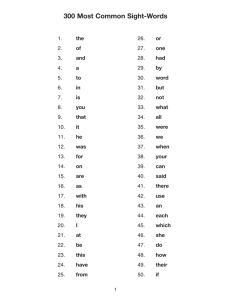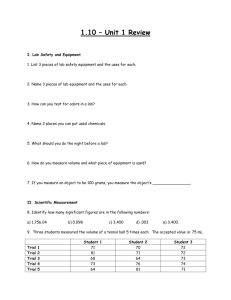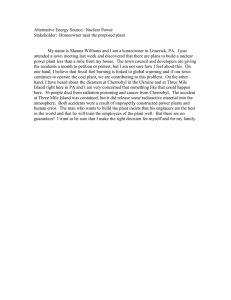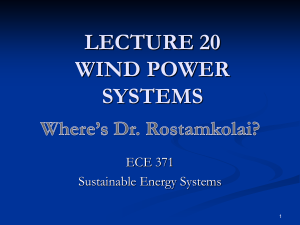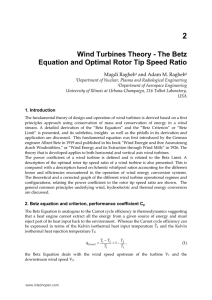Math 171 — Calculus I Spring 2016 Name: 1
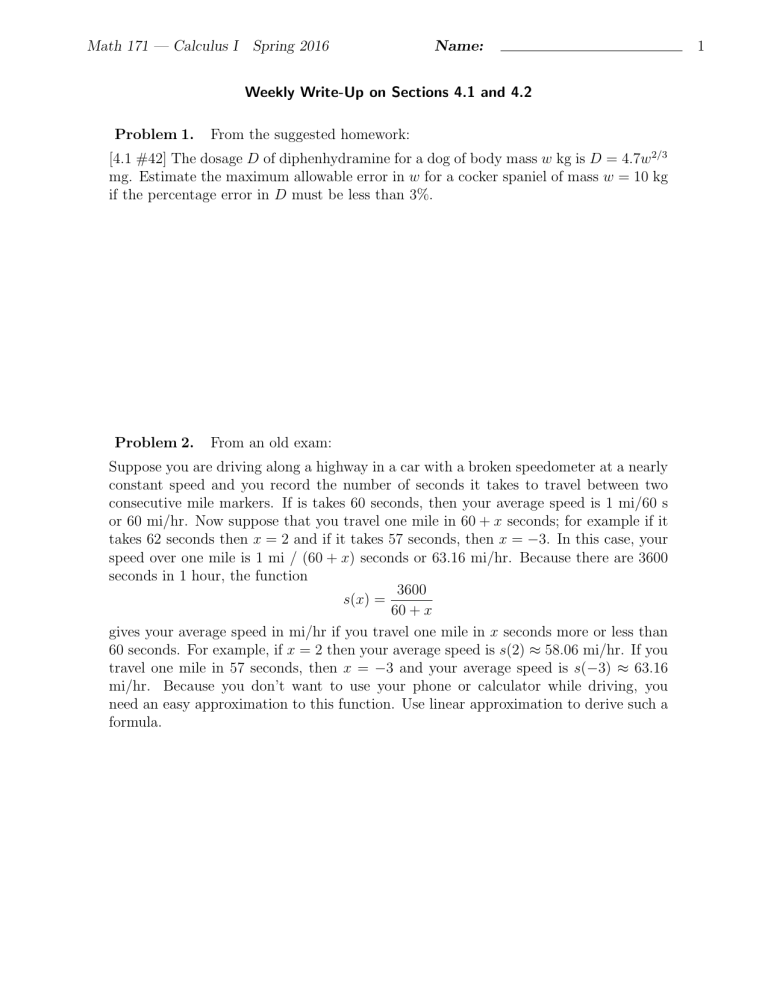
Math 171 — Calculus I Spring 2016 Name:
Weekly Write-Up on Sections 4.1 and 4.2
Problem 1.
From the suggested homework:
[4.1 #42] The dosage D of diphenhydramine for a dog of body mass w kg is D = 4 .
7 w 2 / 3 mg. Estimate the maximum allowable error in w for a cocker spaniel of mass w = 10 kg if the percentage error in D must be less than 3%.
1
Problem 2.
From an old exam:
Suppose you are driving along a highway in a car with a broken speedometer at a nearly constant speed and you record the number of seconds it takes to travel between two consecutive mile markers. If is takes 60 seconds, then your average speed is 1 mi/60 s or 60 mi/hr. Now suppose that you travel one mile in 60 + x seconds; for example if it takes 62 seconds then x = 2 and if it takes 57 seconds, then x = − 3. In this case, your speed over one mile is 1 mi / (60 + x ) seconds or 63.16 mi/hr. Because there are 3600 seconds in 1 hour, the function
3600 s ( x ) =
60 + x gives your average speed in mi/hr if you travel one mile in x seconds more or less than
60 seconds. For example, if x = 2 then your average speed is s (2) ≈ 58 .
06 mi/hr. If you travel one mile in 57 seconds, then x = − 3 and your average speed is s ( − 3) ≈ 63 .
16 mi/hr. Because you don’t want to use your phone or calculator while driving, you need an easy approximation to this function. Use linear approximation to derive such a formula.
2
Problem 3.
For in-class discussion:
In 1919, physicist Alfred Betz argued that the maximum efficiency of a wind turbine is about 59%. If wind enters a turbine with speed v
1 and exits with speed power extracted is the difference in kinetic energy per unit time: v
2
, then the
P =
1
2 mv
2
1
−
1
2 mv
2
2 where m is the mass of wind flowing through the rotor. Betz assumed that m = ρA ( v
1
+ v
2
) / 2, where ρ is the density of air and A is the area swept out by the rotor. Wind flowing undisturbed through the same area A would have mass per unit time ρAv
1 power P
0
=
1
2
ρAv
3
1
. The fraction of power extracted by the turbine is F = P/P 0.
and a. Show that F depends only on the ratio r = v
2
/v
1 and is equal to
F ( r ) =
1
2
(1 − r
2
)(1 + r ) where 0 ≤ r ≤ 1.
b. Show that the maximum value of F ( r ), called the Betz Limit, is 16 / 27.

